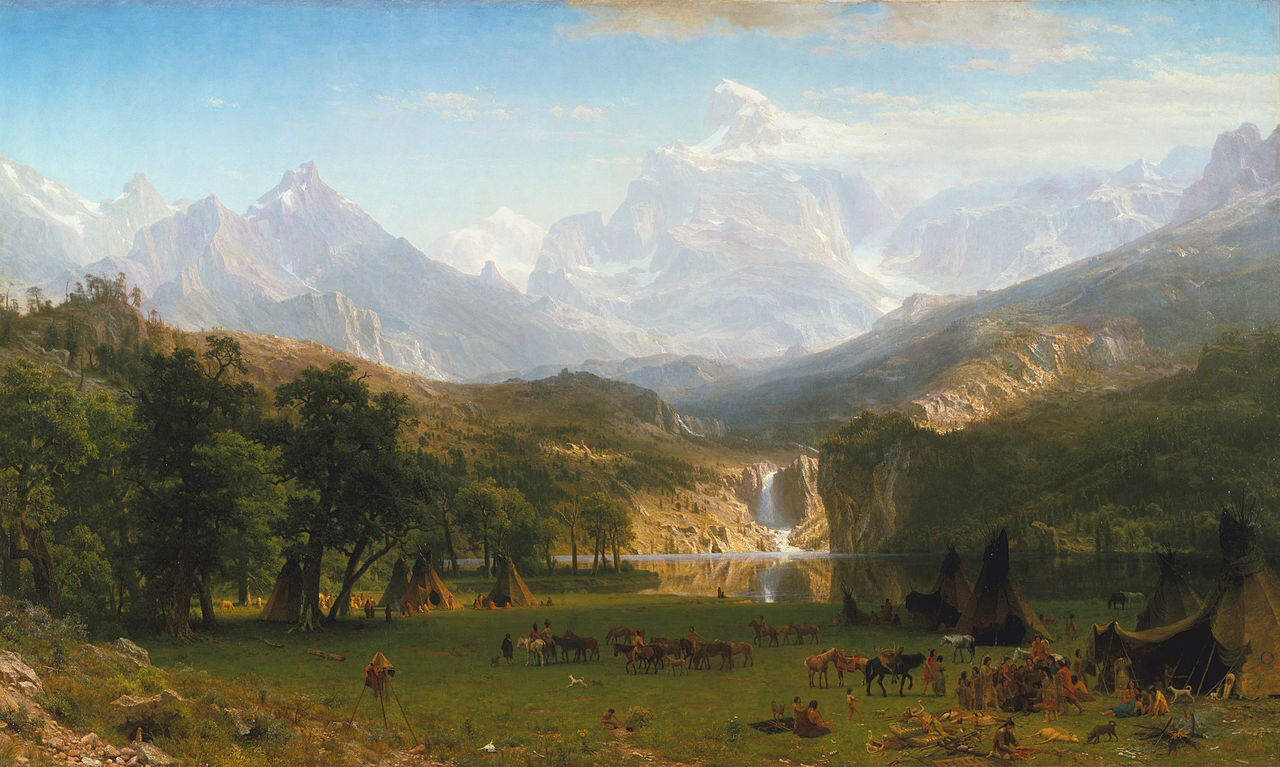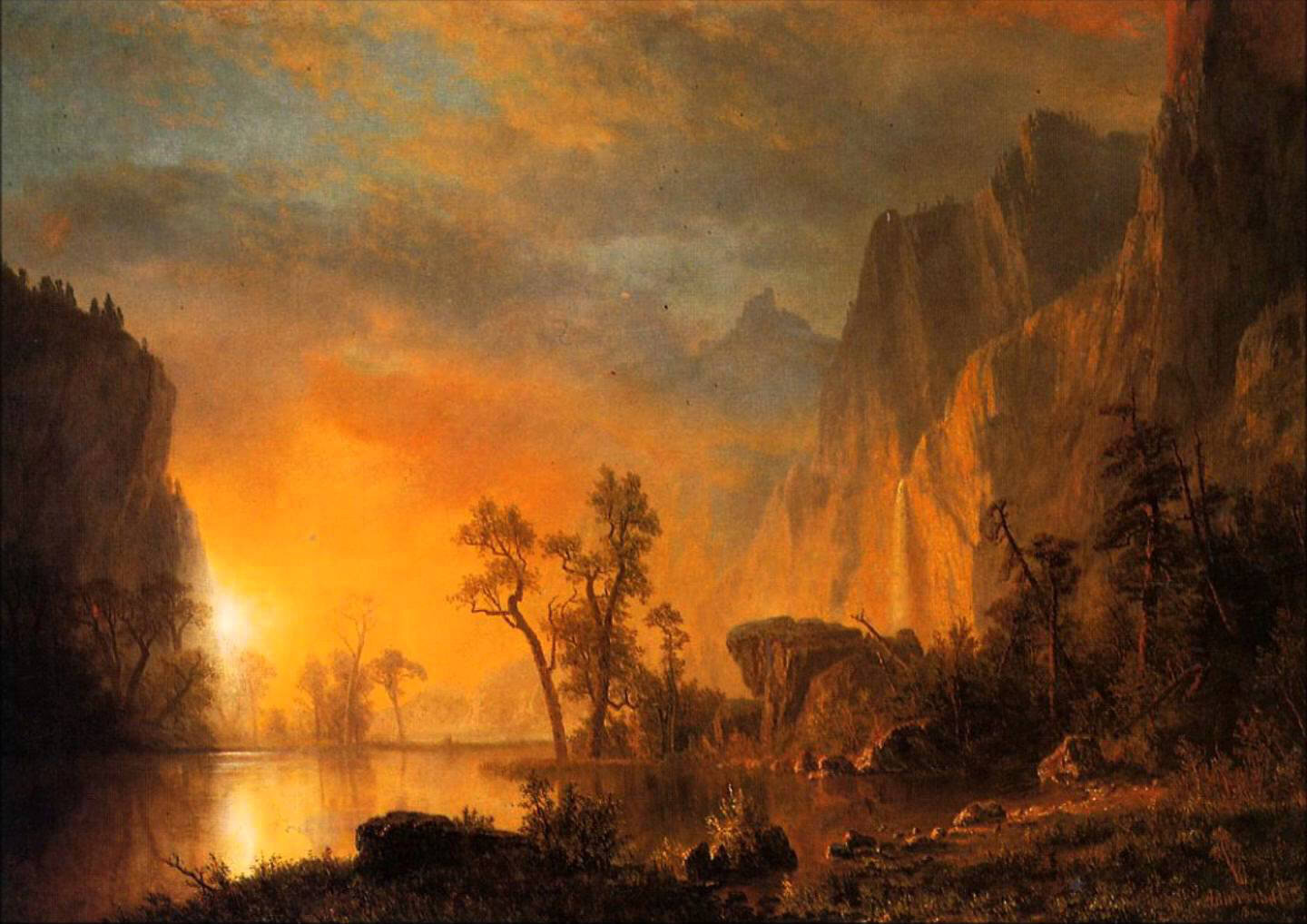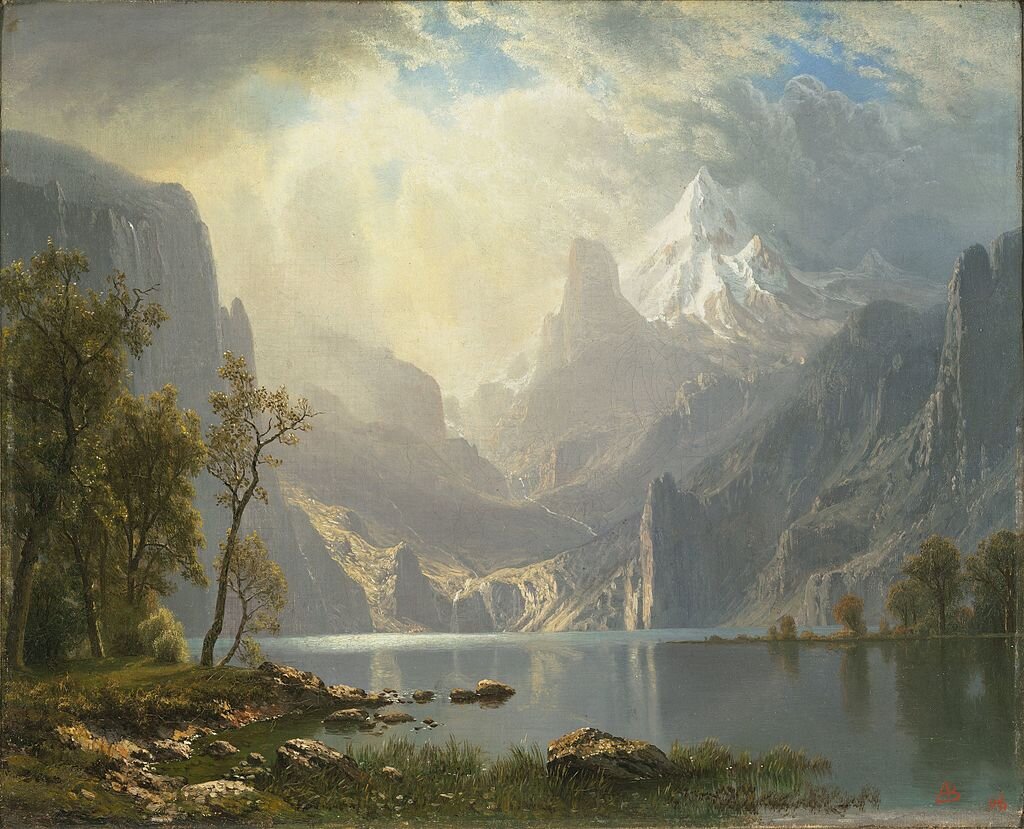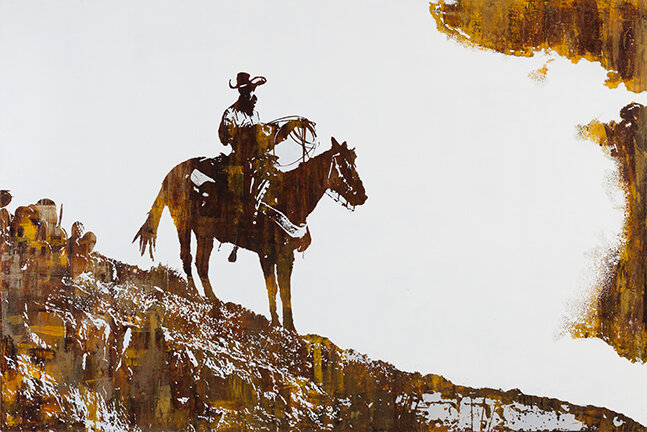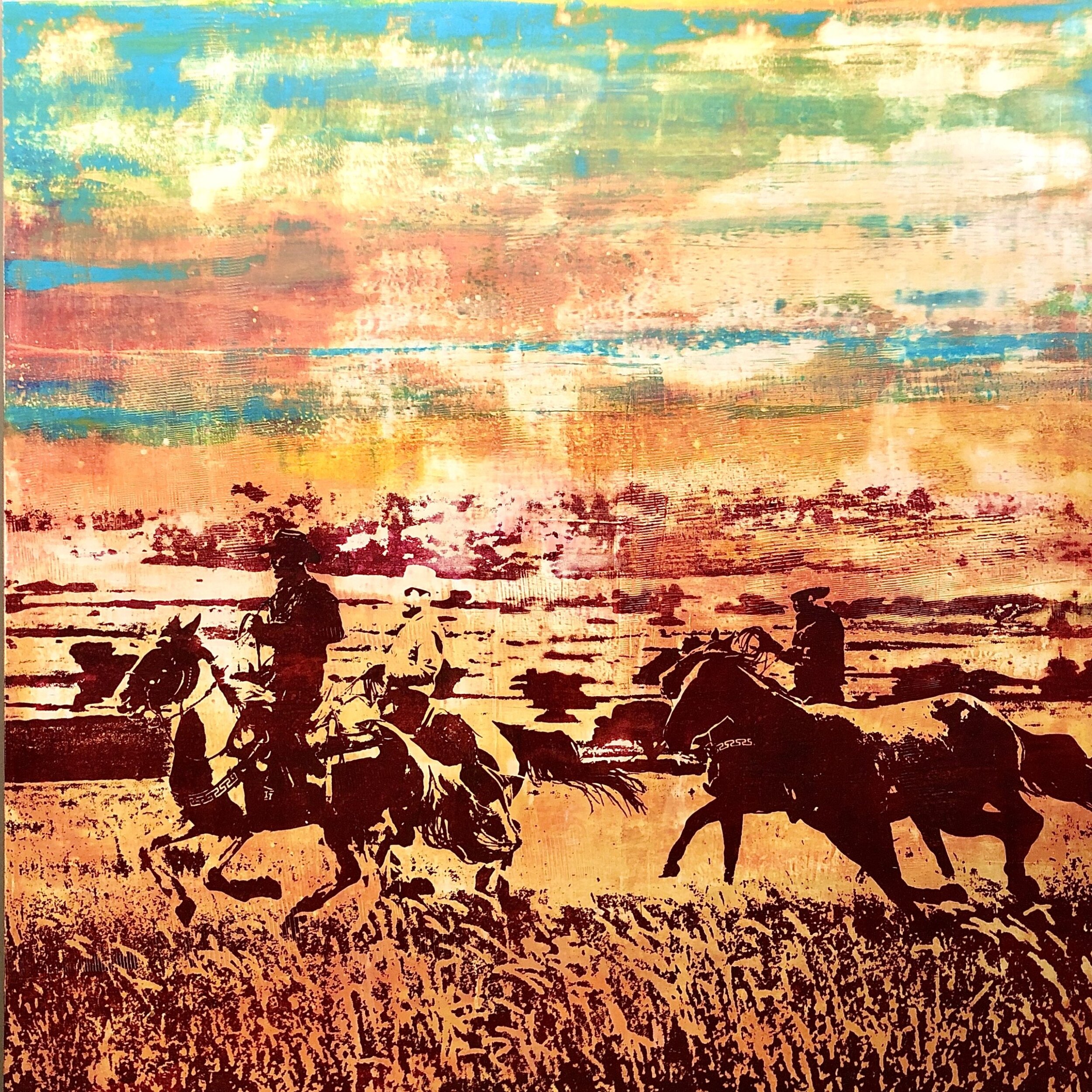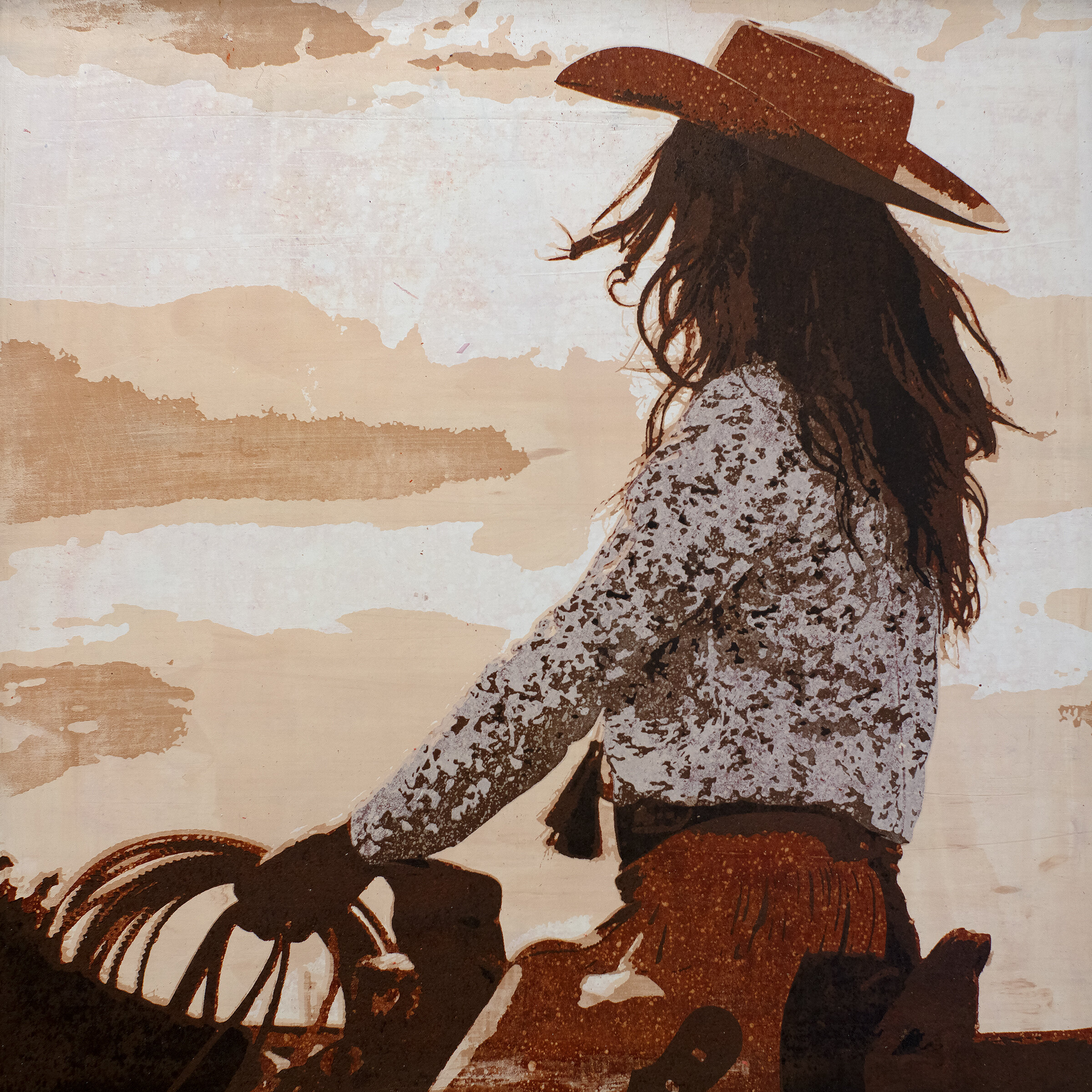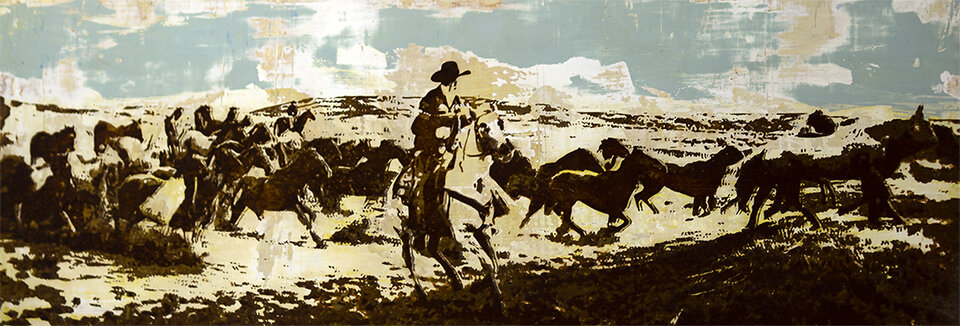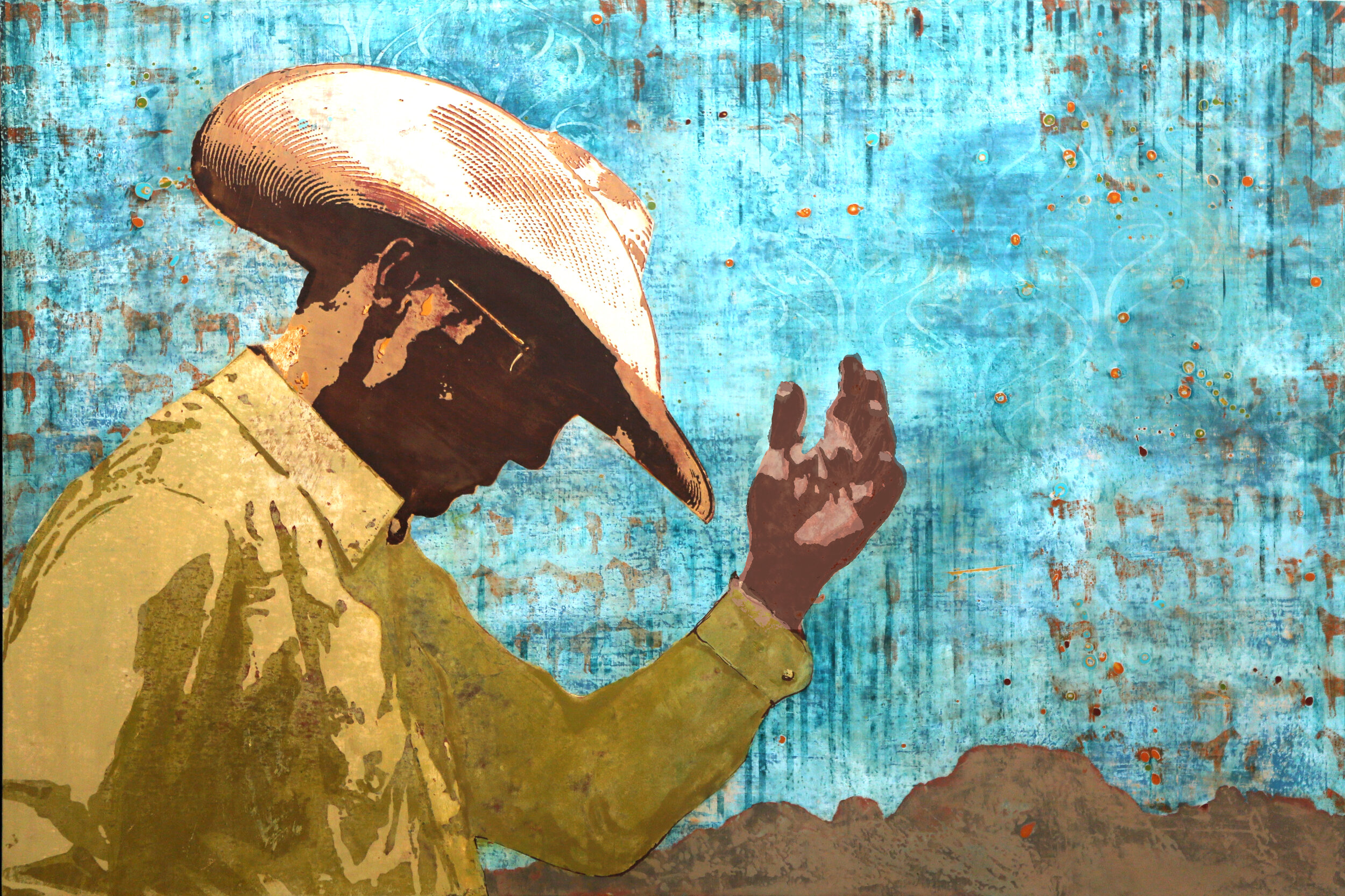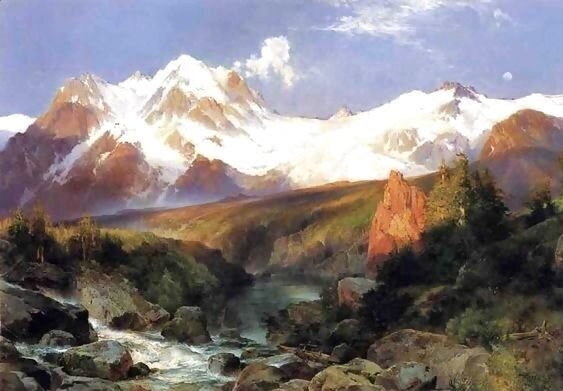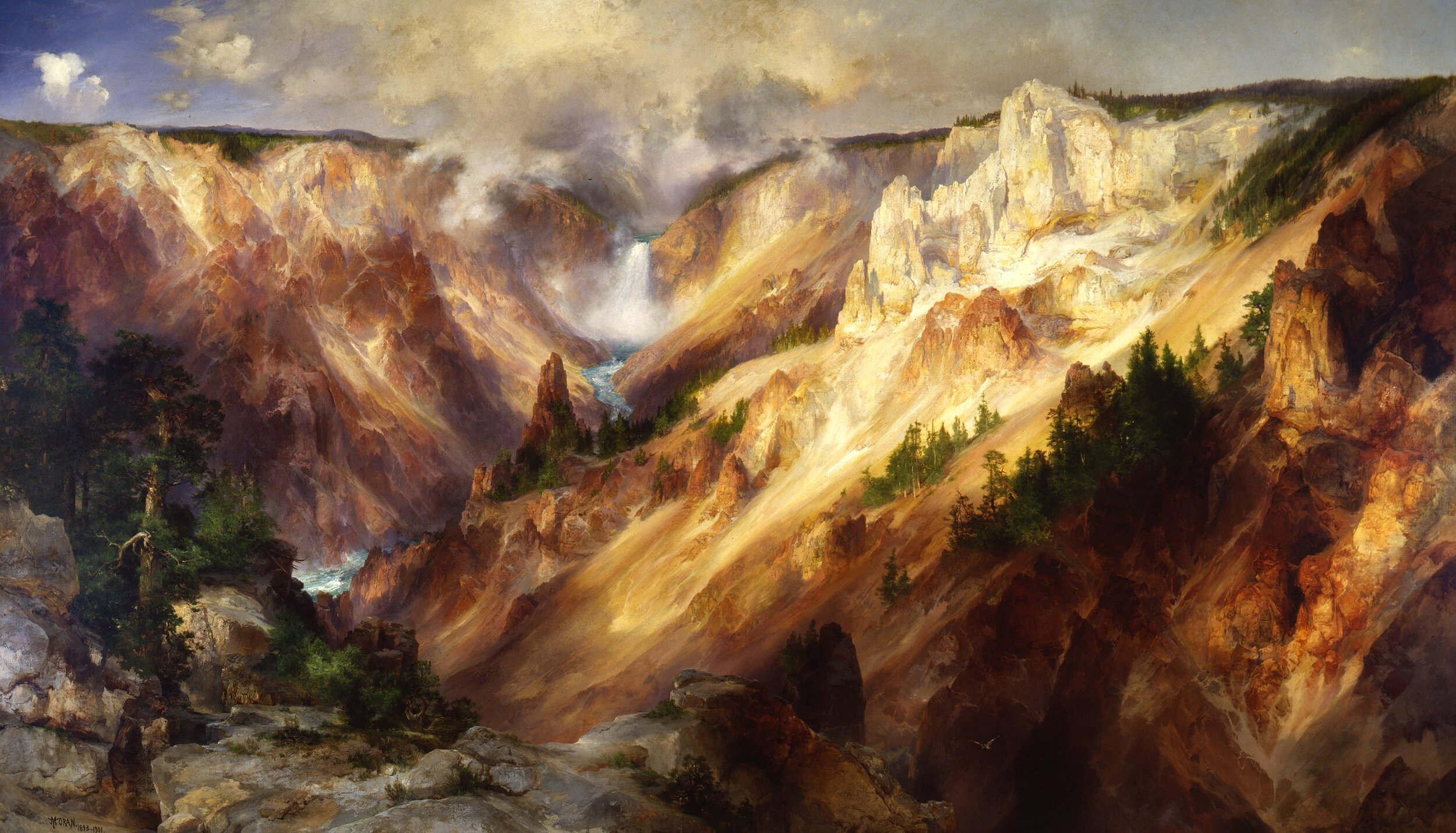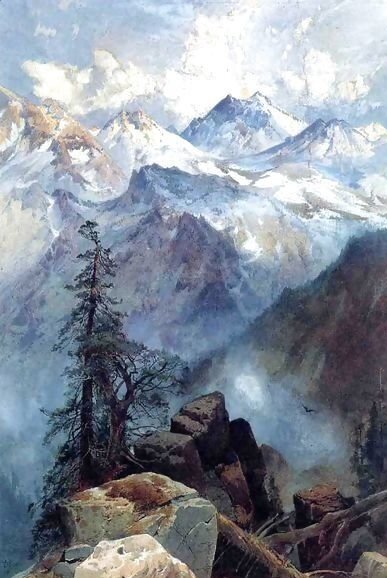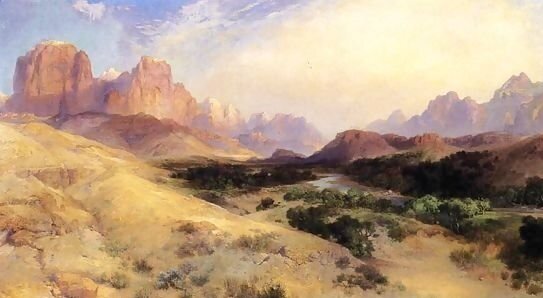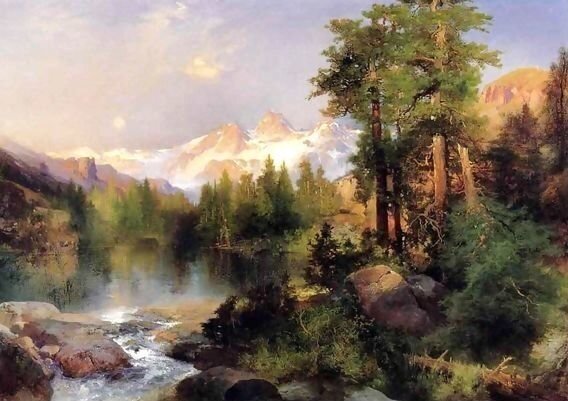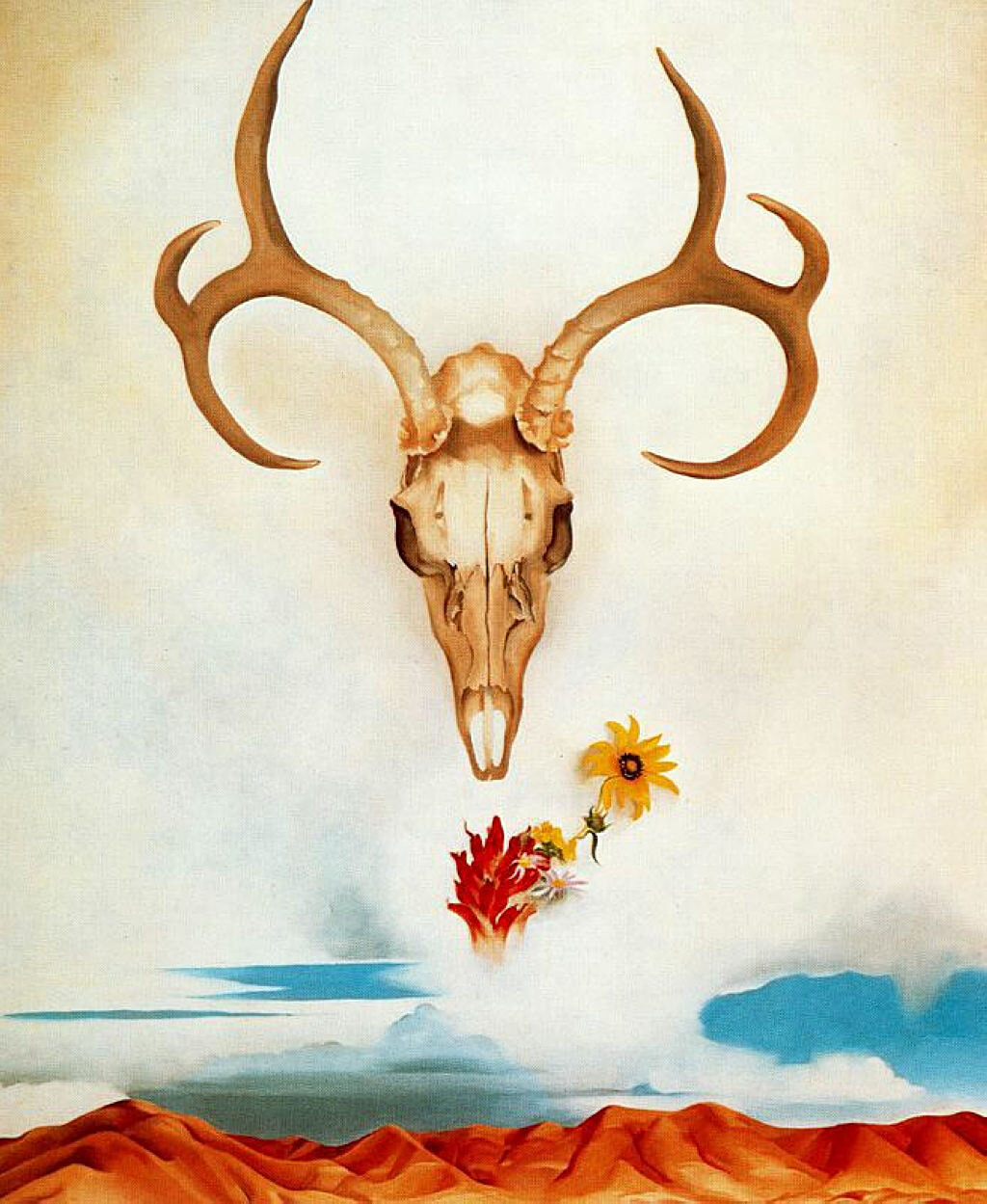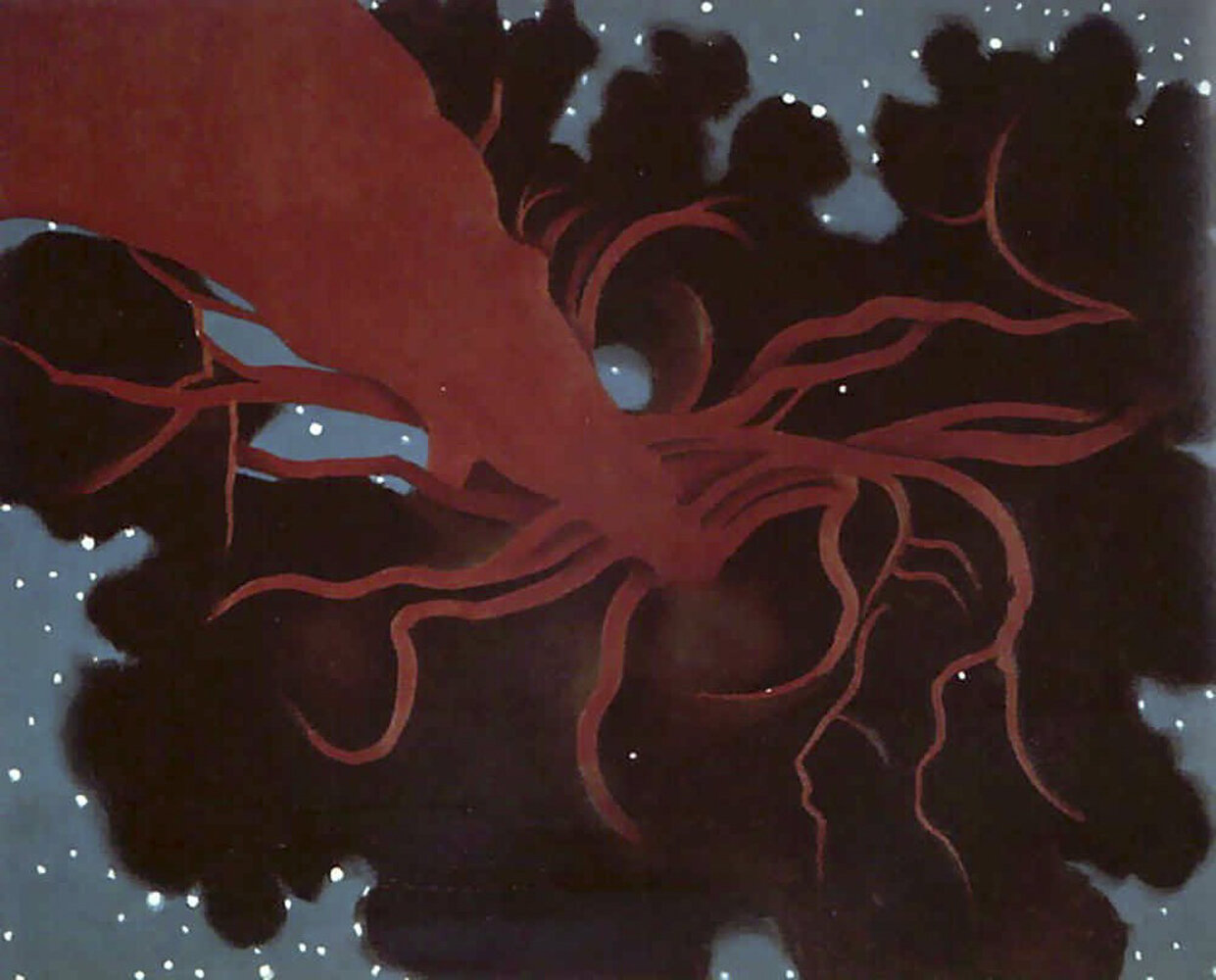Alpine Art of the American West

It seems almost impossible to resist the allure of the American West. It drew everyone from veterans to miners to anyone looking for an adventure into the unknown. It's only natural, then, that American artists flocked there as well, enticed not only by the freedom of the frontier but the novelty of painting landscapes unlike anything else they'd ever seen.
Albert Bierstadt
It is a bit ironic that perhaps the most influential artist of the Alpine American West was a German. Born in Prussia in 1830, Albert immigrated to New Bedford, Massachusetts shortly after birth, where he developed an interest in and talent for artistic pursuits. By the time he started painting in oils, he had developed a distinct talent for painting large, sweeping, visually striking landscapes, first in Europe, then in the United States.
He was a key figure in the Hudson River School; an art movement focused on the serene landscapes of the Hudson River Valley, and the Catskill and Adirondack Mountains. These works are heavily influenced by romanticism, and the resulting pieces are visually striking - scenes glorifying nature that elicit an intense emotional reaction to the beauty of the landscape.
Like many, Albert was unable to resist the allure of the frontier, first traveling west in 1859 with land surveyors from the U.S. Government. He returned to his New York studio with a book full of sketches and painted the American West in a grandeur not previously seen before.
Returning to the West periodically through his career established him as the preeminent artist of the mountain landscapes of the American West. His work brought the images of western mountain landscapes to a broad audience who, to that point, had been unable to see them in person.
Maura Allen
Maura is a storyteller. With a trained eye developed over 40+ years behind the camera, shooting in black and white, there is an intimacy in her work and viewing it gives the feeling that there is much more to discover.
Rooted in both the real and mythical American West, Maura works beautifully across multiple mediums. For us, it's her stunning paintings that use color and texture to capture the American West that often resides in our minds. It's no wonder she's been called "The Warhol of the West."
Thomas Moran
Thomas Moran is usually mentioned alongside Albert Bierstadt - the two were often called the Rocky Mountain School because they defined the genre of American alpine landscapes. His life story is similar too: born in England, settled on the east coast (Moran grew up in Philadelphia), and ultimately was unable to resist the pull of the West. Like Bierstadt, he accompanied a surveyor from the government on the trip; this time, Ferdinand Hayden, director of the U.S. Geological Survey, led the way to an unknown part of the Wyoming wilderness.
Moran got to work, sketching details and keeping notes on the places they visited and the vistas that they saw in this place known as Yellowstone. The visual details he brought back with him captured people's attention, to the point where the U.S. Congress and President Ulysses S. Grant took notice and a conservation movement began. Today, we know Yellowstone as one of the crown jewels in our national park system, no small thanks to Thomas Moran's work.
Georgia O'Keeffe
Perhaps the first artist you think of when you think of the American West, Georgia O'Keeffe's work needs little introduction, and no list of artists in this realm is complete without her. The "Mother of American modernism," she initially worked in New York City where she developed her style of abstract art - the close-ups of flowers and tall skyscrapers.
However, a 1929 trip to Taos redefined her artistic approach, connecting directly with the mountains of the Southwest in an intimate way that brought her work to new heights.
“Such a beautiful, untouched lonely feeling place, such a fine part of what I call the ‘Faraway’. It is a place I have painted before ... even now I must do it again.”

